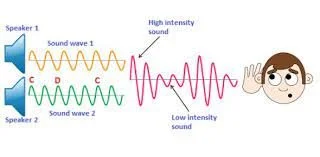The Physics of Marketing - Part Two
Sound vibrations or sine waves make it easier to listen to your customers…
Sound vibrations…good vibrations – like a good song from the sixties, right? Although that may be a true statement, the sound vibrations I’m most interested in today are those that were used to test and model the impact of sound on the space shuttle tiles and how they protected space shuttles during lift off.
Huh? What does that have to do with marketing? Everything I say. Sound vibration theories becomes very useful if you know how to apply them to high performance customers.
Consider a customer that purchases three hundred times per year. I recognize that for many marketers this may be a stretch, unless of course you’re Facebook (Meta), Apple, NetFlix, Amazon and a few other large scale marketers. However, let’s hold those thoughts for a moment and focus on the B2B direct marketers. They actually have customers that buy three hundred or more times per year.
So let’s construct a sound wave in our heads. Sound is actually a string of waves connected together as a sine. When multiple waves are connected together we hear sound. Hopefully the sounds you listen to are good sounds and they make you happy.
However, the sine that we are visually constructing actually relates to order frequency where each order represents a wave on the sine. When we string three hundred orders together we can “see” the sine and “listen” to the sound waves of our customers. The monetary value of each order can be used to determine the size of each wave (height) and the time elapsed between each order (frequency) can be used to determine the space between each wave.
The beauty of sound vibration theory is that it can be used to understand and explain the randomness that occurs in the buying behaviors of your customers. When used in aggregate it demonstrates whether your business is under stress and how well your company will weather any economic storms. When applied to individual customers it can be used to construct models that identify at-risk customers.
I think this is just one approach to many uses of sound vibration theory in modeling and “listening” to customers. In theory, it helped isolate the tiles that fell off of the space shuttle during lift off…or in this case it can identify customers that fail to launch or simply fall away as your company sails into the future.
So, let me ask you – are you listening to your customers?

